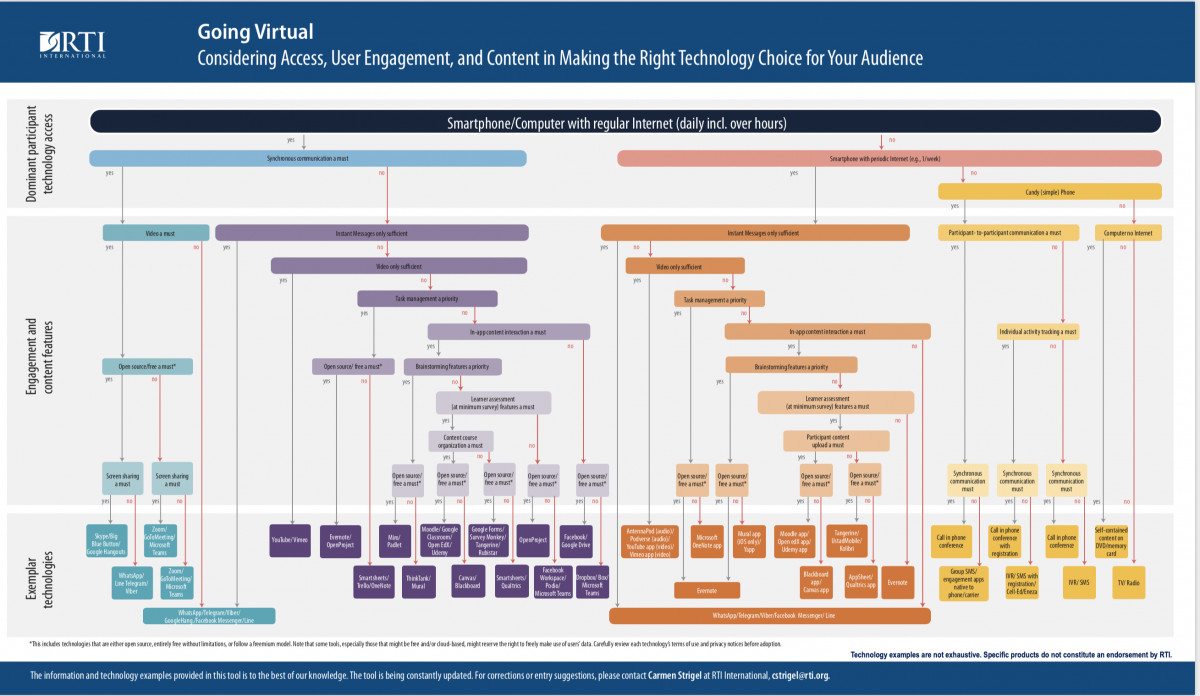
As we all adjust to working from home, we face many challenges, both personal and professional. Yet, we still deliver the work we were contracted to do for our clients and with our partner governments around the world. Therefore, we need to find ways to adapt, shift priorities, and collaborate in new ways in order to effectively implement project activities.
A team from RTI International has been working on a series of recommendations, decision-support tools, and step-by-step guides based on their expertise from decades of working with education technologies in low-resource settings.
For this work, we wanted to think about the needs across sectors and our diverse target groups and project activities. Given RTI’s broad portfolio of work, in some cases, teams may be trying to figure out how to keep teacher training going on an education project, or how to engage with farmers in countries we can no longer travel to, or how to effectively meet virtually with local government leaders.
Among the guiding principles to keep in mind is that no size fits all. Some technology-supported approaches work well in one context, but not another. And there isn’t one approach that meets every target audiences' needs; even within a single program, you might need to plan for various approaches to reach a diverse audience.
To help project teams, program leaders, and governments “go virtual”, here are several key recommendations and considerations:
- Identify communication channels and dominant participant technology access. In essence, “Meet people where they are”. What technology access do most of your targeted participants have? What costs of previously planned face-to-face activities could be diverted into costs of infrastructure (data, hardware, printing, production) for virtual activities?
- Identify key participant engagement and content features. Especially for education, there are many lists (e.g., from the World Bank or UNESCO) introducing technologies along different categories, such as offline/online, content management versus learning management system, assessment, or even along different target skills (e.g., OECD). But how do you know when to use which technology type for YOUR specific audience and purpose? RTI developed this detailed flow chart to help you systematically examine audience and project needs through simple “yes/no” answers, drilling down to specific technologies and platforms. Keep the target audience in mind when considering the answer (answers may change depending on the target audience so the step-by-step could be done multiple times for different audiences); yet also be aware of critical considerations on data security and privacy, particularly when using cloud-based platforms.
- Consider and compare specific technology platforms. There are thousands of technologies! The team has tested various (many of which are also considered in the flow-chart) and have also found that, often, technologies can be re-purposed (e.g., using Yapp, an event management app, for a participant engagement and content sharing tool).
Successfully ‘going virtual’ depends on many factors. To find out more about specific lessons learned from RTI’s projects around the world, keep monitoring shared.rti.org for new commentaries and resources.
This article was co-authored by Hiske Leegstra & Carmen Strigel, RTI International
Cover image (c) RTI International, All rights reserved.

